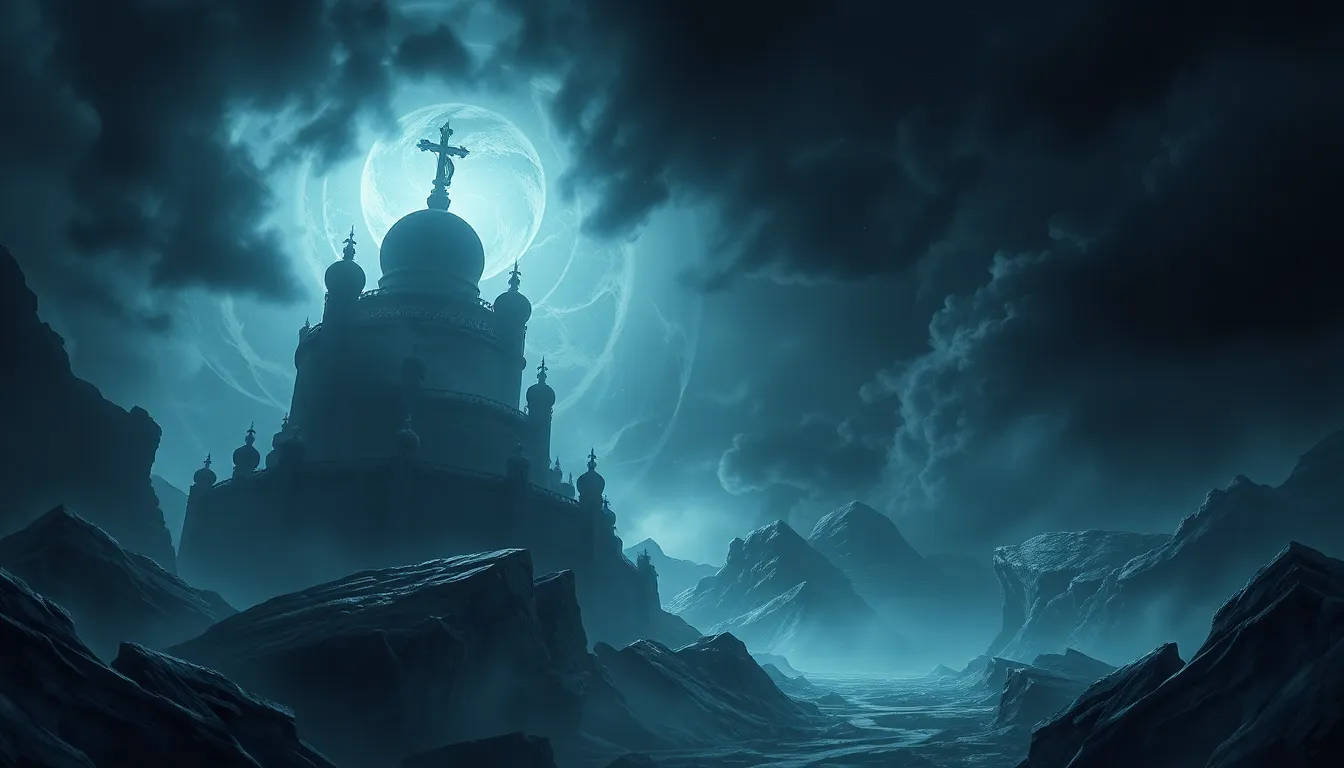The Kingdom of the Shadow Realm: Myths of Darkness and Light
I. Introduction to the Shadow Realm
The Shadow Realm is a complex and multifaceted concept found in various mythologies around the world. It often serves as a metaphorical space representing the unknown, the feared, and the misunderstood aspects of existence. The significance of the Shadow Realm lies in its exploration of themes surrounding darkness and light, which are prevalent in the myths of many cultures.
Throughout history, darkness and light have been depicted in diverse ways. In some cultures, light is associated with divinity and purity, while darkness is seen as chaotic and malevolent. Conversely, other traditions view darkness as a necessary counterpart to light, embodying wisdom and the richness of the unconscious. This article aims to delve into the myths and narratives surrounding the Shadow Realm, unveiling its historical context, major figures, and the symbolism inherent in darkness and light.
II. Historical Context of the Shadow Realm in Mythology
Ancient civilizations offered varied interpretations of shadow and light, often reflecting their values and beliefs. For instance:
- Mesopotamia: The Sumerians and Babylonians envisioned a profound duality between the realms of light, associated with deities like Marduk, and the shadowy underworld ruled by figures like Ereshkigal.
- Egypt: The Egyptians held a complex view of the afterlife, with the underworld (Duat) representing both darkness and a necessary passage to eternal life, governed by Osiris.
As societies evolved, so did the concept of the Shadow Realm. The interplay between light and dark became a narrative device in folklore, literature, and religious texts, reflecting humanity’s ongoing struggle with the unknown.
III. Major Figures and Deities of the Shadow Realm
In exploring the Shadow Realm, we encounter a variety of significant deities and figures that embody its themes:
- Hades: In Greek mythology, Hades is the god of the underworld, representing the finality of death and the mysteries of the afterlife.
- Loki: In Norse mythology, Loki embodies chaos and trickery, often bringing darkness into the world while also playing a crucial role in its balance.
- Prometheus: The Titan who brought fire to humanity, symbolizing a beacon of light against the darkness of ignorance.
The duality present in these characters illustrates the complex nature of mythological narratives, where heroes and anti-heroes often intersect, revealing the shades of gray in moral and ethical dilemmas.
IV. The Symbolism of Darkness in Myths
Darkness in myths often represents chaos, fear, and the unknown:
- Chaos: Myths frequently portray darkness as a primordial state of chaos that must be tamed or transformed into order.
- Fear: The unknown elements of darkness evoke fear and anxiety, reflecting human psychology and our instinctual responses.
- Growth: Darkness can also symbolize the potential for personal and collective growth, as it challenges individuals to confront their fears and emerge stronger.
V. The Symbolism of Light in Myths
Conversely, light is often depicted as a symbol of hope, knowledge, and purity:
- Hope: Light frequently represents the promise of a new dawn or the possibility of redemption.
- Knowledge: In many cultures, light signifies enlightenment and the acquisition of wisdom, as seen in the allegory of Plato’s Cave.
- Transformation: Light serves as a transformative force, illuminating the path toward self-discovery and growth.
The contrast between light and dark is a central theme in mythological narratives, creating a rich tapestry of storytelling that resonates with the human experience.
VI. The Interplay Between Darkness and Light
The balance between darkness and light is a recurring motif in mythology, often illustrated through:
- Yin and Yang: In Chinese philosophy, the concept of yin and yang embodies the idea that opposites coexist and are interdependent.
- Mythological Stories: Many myths depict the struggle between light and dark forces, showcasing their coexistence and the necessity of both for a complete narrative.
- Cyclical Nature: The cyclical nature of light and darkness is evident in seasonal myths, where the return of light symbolizes rebirth and renewal.
VII. Modern Interpretations of the Shadow Realm
Contemporary literature and media have adopted and adapted the concept of the Shadow Realm, reflecting current societal fears and aspirations:
- Fantasy Genres: Modern fantasy often portrays the Shadow Realm as a place of adventure, where characters confront their fears and grow.
- Psychological Perspectives: Many interpretations explore themes of inner darkness, using the Shadow Realm as a metaphor for the unconscious mind.
- Philosophical Insights: The dichotomy of darkness and light serves as a backdrop for philosophical discussions on morality, existence, and human nature.
VIII. Cultural Variations of the Shadow Realm
Different cultures offer unique views on the Shadow Realm, revealing both common themes and distinct divergences:
- Japanese Yurei: Ghostly figures embodying the spirits of the restless dead, illustrating the power of unresolved emotions.
- Native American Beliefs: Many tribes embrace a holistic view of darkness and light, recognizing the importance of both in the natural world.
- Common Themes: Across cultures, themes of duality, balance, and transformation frequently emerge, highlighting a universal fascination with the interplay of shadow and light.
In conclusion, the Kingdom of the Shadow Realm serves as a rich tapestry of myths and narratives exploring the dualities of darkness and light. By examining historical contexts, major figures, and cultural variations, we can appreciate the complexity of these themes and their significance in both ancient and modern contexts.



